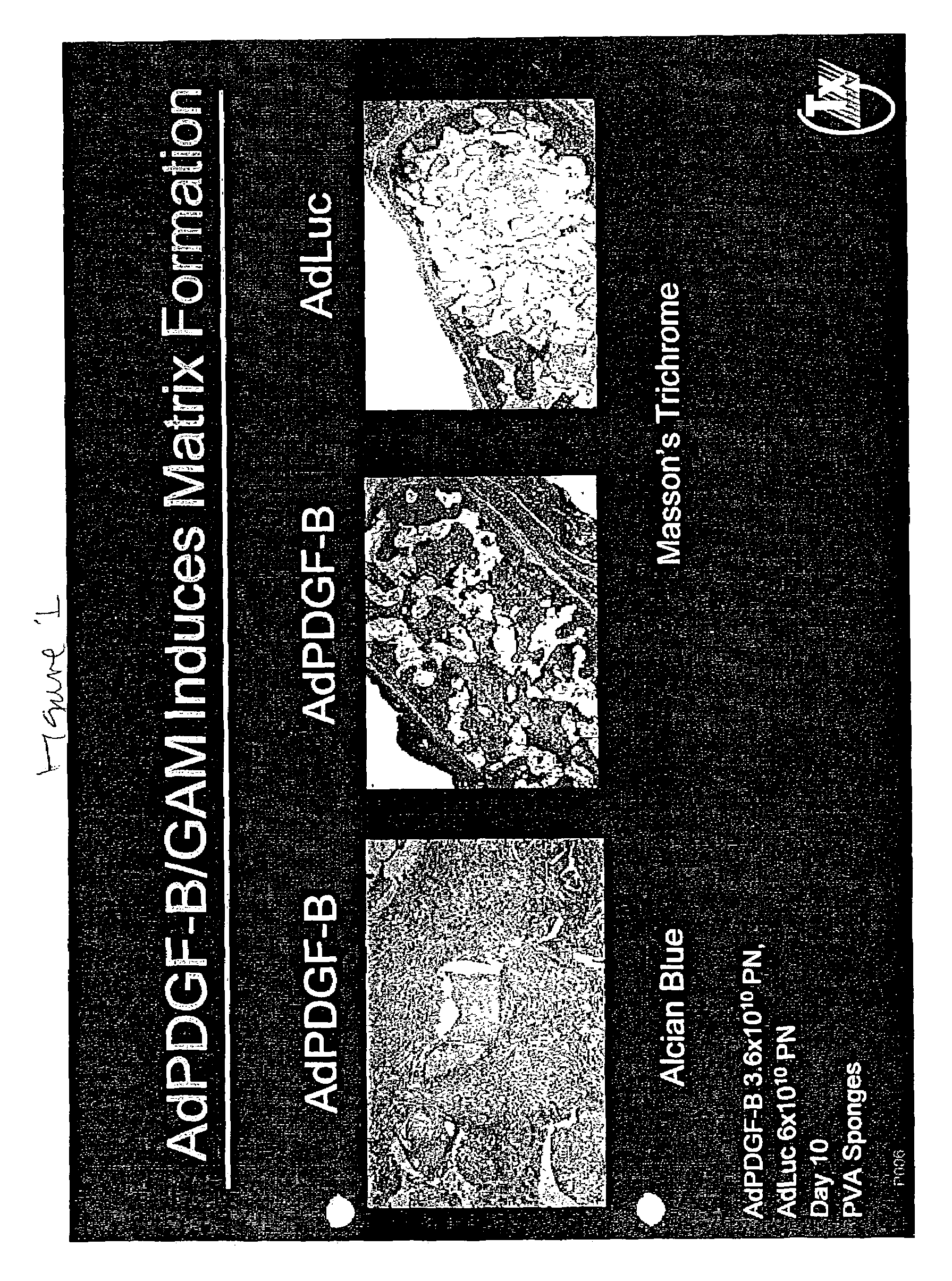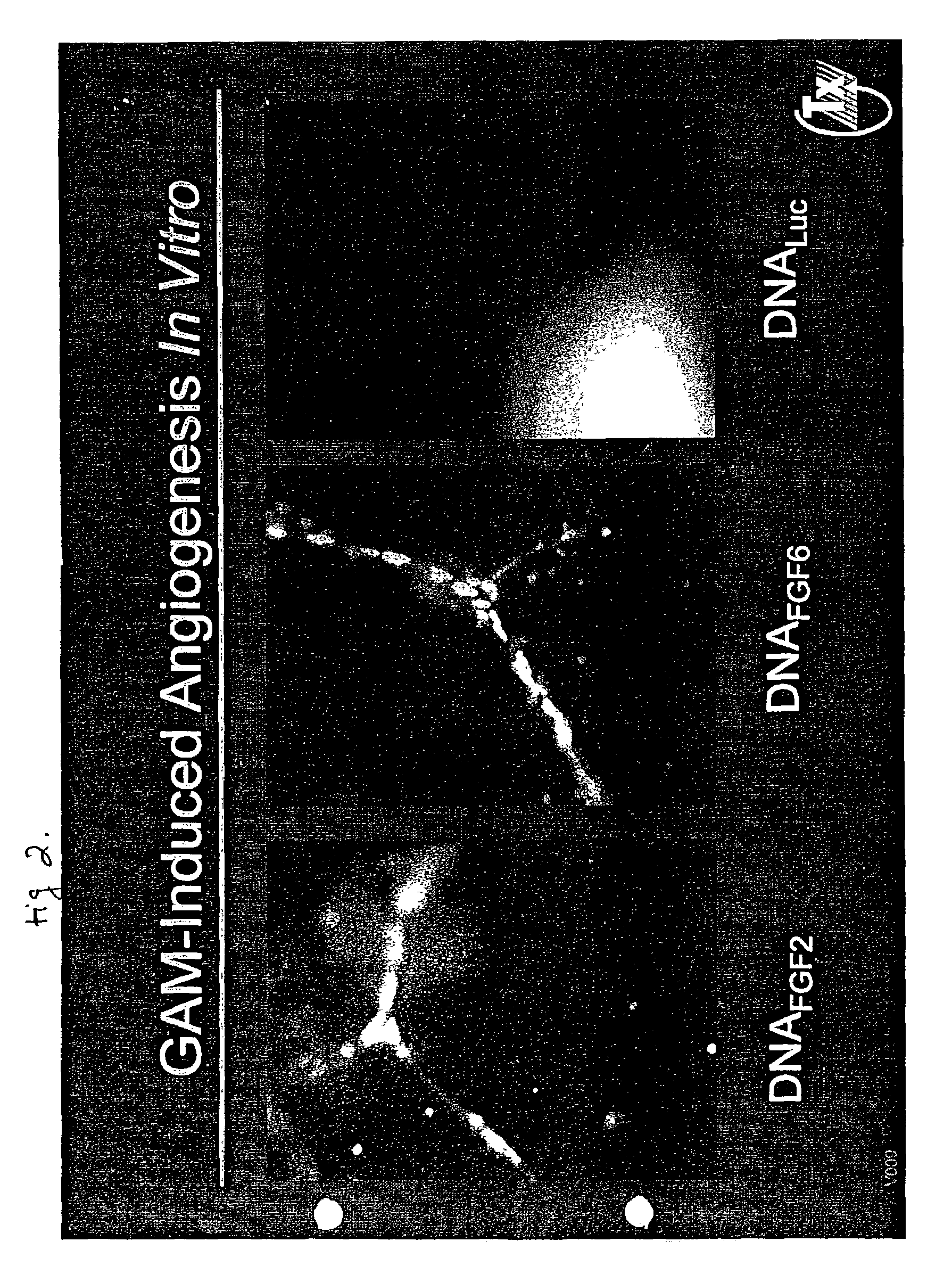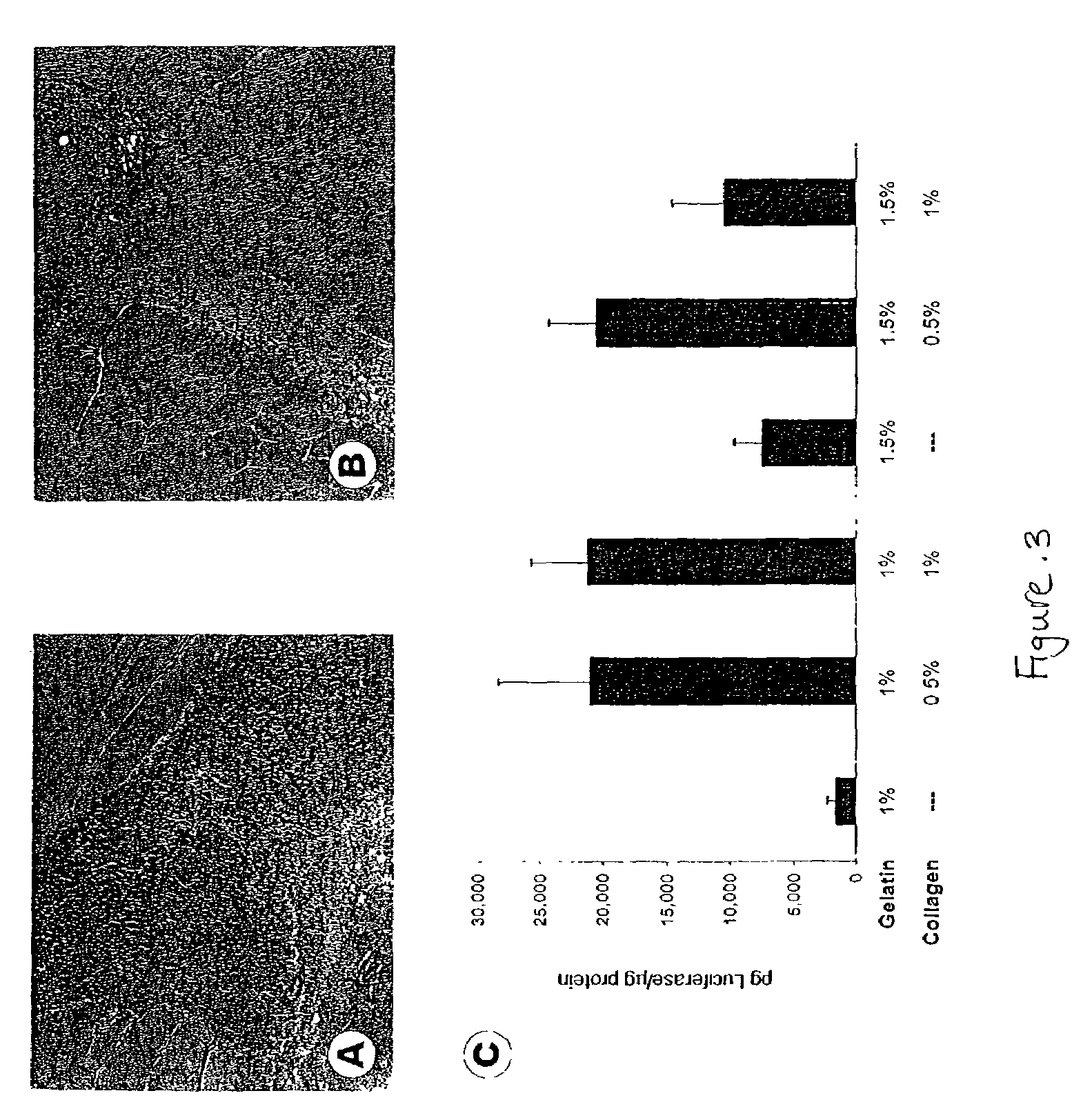Traversal of nucleic acid molecules through a fluid space and expression in repair cells
a nucleic acid and fluid space technology, applied in the direction of drugs, peptide/protein ingredients, prosthesis, etc., can solve the problems of systemic delivery of therapeutic proteins, cytokines, and unwounded tissue with serious unwanted side effects
- Summary
- Abstract
- Description
- Claims
- Application Information
AI Technical Summary
Benefits of technology
Problems solved by technology
Method used
Image
Examples
example 1
New Tissue Formation in vivo Within a Biocompatible Substance
[0196]PVA sponges were implanted subcutaneously into rats on day 0 and injected on day 4 with collagen containing 109 pfu adenovirus encoding luciferase (AdLuc) (Rogers et al., Tumor Targeting 3:25-31, 1998) or PDGF-BB (AdPDGF) (Liechty et al., J. Invest. Dermatol. 113(3):375-383, 1999). It should be noted that at 4 days this is a fluid filled space. At day 10 post-implantation, sponges were removed and processed. Expression of PDGF-BB was confirmed by ELISA.
[0197]Sections were stained with Alcian blue to detect infiltrating cells and glycosaminoglycans or Sirius red to detect mature collagen bundles. As demonstrated in FIG. 1, increased cellularity and vascularity present were observed in AdPDGF sponges as compared to sponges injected with AdLuc.
[0198]Formalin-fixed, paraffin-embedded sponge sections were stained using Masson's Trichrome. Image-Pro Plus software (Media Cybernetics, Silver Spring, Md.) was used to differen...
example 2
Bone Healing in Lower Limbs of Horses
[0199]Eight healthy (CBC, Chemistry profile and physical exam), sound (radiographs, lameness evaluation and joint assessment) adult (age 3-15 yrs) horses undergo arthrotomy under general anesthesia of the metacarpus III (MCIII) and metacarpophalangeal (MCP) joint of each limb. On Day 0 one randomly assigned limb has 2 p-MAT gene coated collagen sponges placed, one through a small hole drilled into diaphyseal cortex of the dorsal MCIII and the other through the distal condyle of MCIII in the MCP joint. The contralateral limb undergoes arthrotomy of the same sites but will serve as a control. With forceps, sponges are placed through a small stab incision (˜½cm) into the areas mentioned above and closed with a single suture. Subsequently, the horses are dosed with phenylbutazone once a day (2.2 mg / kg) IV and bandaged for 3 days while housed in 12′×12′ box stalls. Here they remain for 4 weeks. During the first week post-op, daily evaluations are perf...
example 3
Collagen-Immobilized FGF Genes Induce Angiogenesis in vivo
[0200]METHODS: DNA-matrix formulations. Eukaryotic expression plasmids were constructed encoding either firefly luciferase (DNALuc), an 18 kD mutein of FGF2 in which the cysteine at position 96 has been engineered to a serine (DNAFGF2), or a 23 kD form of FGF6 (DNAFGF6); all transgenes were under control of the CMV promoter. Although lacking a classic signal peptide sequence, the FGF2 transgene product is efficiently exported from transfected cells by a signal sequence-independent but energy-dependent pathway (Florkiewicz, R. Z., et al., 1995. J. Cell Physiol. 162:388-399). Recombinant FGF2 mutein protein was also produced as previously described (Sosnowski, B. A., et al., 1996 J. Biol. Chem 271:33647-33653), and demonstrated equivalent activity to wild type 18 kD FGF2 in endothelial proliferation assays (Sosnowski, B. A., et al., 1996 J. Biol. Chem 271:33647-33653). Adenovirus vectors, for example, AdFGF2 and AdFGF6, were al...
PUM
| Property | Measurement | Unit |
|---|---|---|
| Volume | aaaaa | aaaaa |
| Volume | aaaaa | aaaaa |
| Volume | aaaaa | aaaaa |
Abstract
Description
Claims
Application Information
 Login to View More
Login to View More - R&D
- Intellectual Property
- Life Sciences
- Materials
- Tech Scout
- Unparalleled Data Quality
- Higher Quality Content
- 60% Fewer Hallucinations
Browse by: Latest US Patents, China's latest patents, Technical Efficacy Thesaurus, Application Domain, Technology Topic, Popular Technical Reports.
© 2025 PatSnap. All rights reserved.Legal|Privacy policy|Modern Slavery Act Transparency Statement|Sitemap|About US| Contact US: help@patsnap.com



